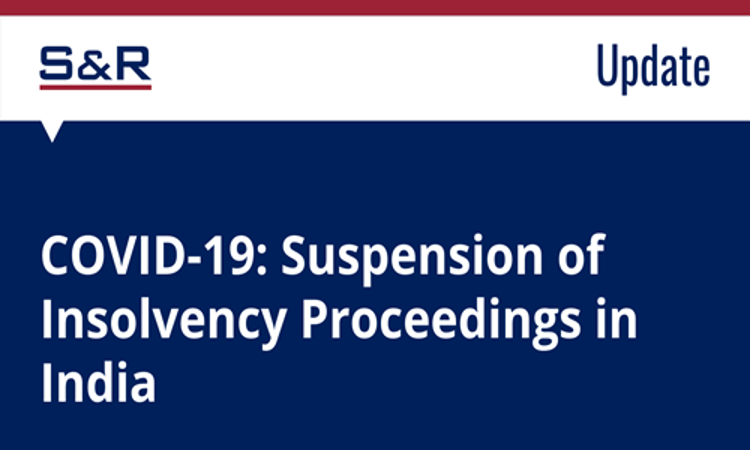COVID-19: Suspension Of Insolvency Proceedings In India
Rajat Sethi, Tanya Aggarwal & Srimukundan R
11 Jun 2020 2:31 PM IST

In the light of the economic upheaval on account of the Covid-19 pandemic and the resultant restrictions on economic activity, the Indian Government had proposed suspension of the right to initiate insolvency resolution proceedings under the Insolvency and Bankruptcy Code, 2016 (the "Insolvency Code") for a period of six (6) months. In pursuance, the Indian Government has now introduced the Insolvency and Bankruptcy Code (Amendment) Ordinance, 2020 (the "Insolvency Ordinance"), which became effective on June 5, 2020.
The Insolvency Ordinance has inserted a new Section 10A (Suspension of Initiation of Corporate Insolvency Resolution Process) in the Insolvency Code and modified Section 66 (Fraudulent Trading or Wrongful Trading) of the Insolvency Code.[1]
This note sets out a summary of the changes brought in by the Insolvency Ordinance.
1. Suspension of Insolvency Proceedings
Section 10A of the Insolvency Code prohibits the filing of applications under Sections 7, 9 and 10 of the Insolvency Code (i.e., by financial creditors, operational creditors and corporate debtors themselves) for the initiation of corporate insolvency resolution process (CIRP) of a corporate debtor in respect of defaults arising during the six (6) month period from and including March 25, 2020 (the date of commencement of the national lockdown) (the six month period may be extended up to one (1) year). Section 10A of the Insolvency Code also prohibits in perpetuity the filing of applications for the initiation of CIRP of a corporate debtor in respect of any such default.
However, Section 10A of the Insolvency Code will not be applicable in respect of defaults committed by the corporate debtor prior to March 25, 2020.
2. Suspension of Liability for Wrongful Trading
Under Section 66(2) of the Insolvency Code, during the CIRP of a corporate debtor and upon an application filed by the resolution professional with the relevant National Company Law Tribunal, the directors or partners (in case of a limited liability partnership) of the corporate debtor can be ordered to personally contribute to the corporate debtor's assets if the director or partner knew or ought to have known that there was no reasonable prospect of avoiding CIRP and did not exercise due diligence to minimize potential losses to creditors. The Insolvency Ordinance now inserts sub-section (3) to Section 66 of the Insolvency Code, which prohibits making any applications under Section 66(2) in respect of any default for which initiation of CIRP has been suspended under Section 10A.
In the light of suspension of CIRP applications under Section 10A of the Insolvency Code, lenders, debt investors and borrowers can consider alternative out-of-court enforcement/ restructuring options, such as under the Reserve Bank of India (Prudential Framework for Resolution of Stressed Assets) Directions 2019 and the Securitisation and Reconstruction of Financial Assets and Enforcement of Security Interest Act, 2002, or in-court restructuring through schemes under Sections 230–232 of the Companies Act, 2013.
This update has been authored by Rajat Sethi (Partner), Tanya Aggarwal (Partner) and Srimukundan R. (Associate). They can be reached on rsethi@snrlaw.in, taggarwal@snrlaw.in and srimukundan@snrlaw.in for any questions. This update is intended only as a general discussion of issues and is not intended for any solicitation of work. It should not be regarded as legal advice and no legal or business decision should be based on its content.
[1] Under Article 123 of the Constitution, an ordinance will be on par with an Act of the Parliament and will cease to operate upon the expiry of six (6) weeks from the date of reassembly of the Parliament unless it is approved by the Parliament. An ordinance will cease to operate earlier if both Houses of the Parliament pass resolutions disapproving the ordinance or if it is withdrawn by the President.

